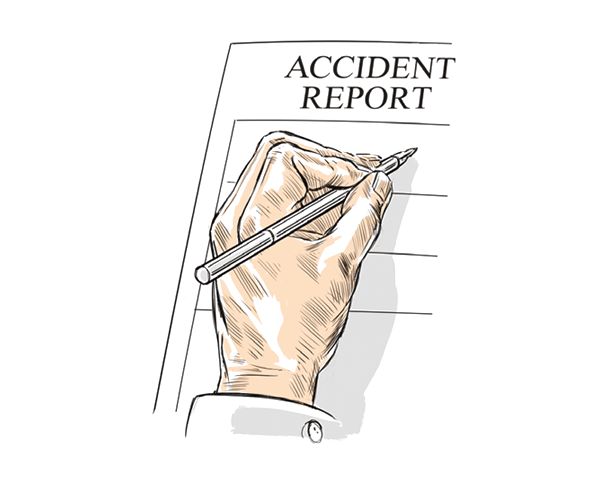Just plain wrong!
Savannah VG Jabiru (1)
G-DOTW
Boys Hill, Barville Farm, near Dover, Kent
Injuries: Nil
The owner of the aircraft had logged a total of 126 hours, of which 24 were on type. He had not yet gained his pilot’s licence and had asked a friend, who held an NPPL, to fly with him. The purpose of the flight was to test a recently fitted transponder before returning to Clipgate Farm. The owner ‘booked out’ on the Clipgate Farm Flight Log and gave the friend’s name as the ‘Pilot’.
The weather was good with a southerly wind of 10-15kt. The owner understood that he would fly the aircraft with his friend ready to take control if necessary. The friend understood this would be a short flight to test a recently installed transponder and that he would assist with the radio.
After starting the engine the friend discovered that, as well as the uncalibrated transponder, the intercom system was unserviceable, but as they could understand each other above the engine noise, the friend agreed to continue the flight and make the radio transmissions. The friend also noted there were no toe brakes on his side of the aircraft and other controls, such as the trimmer, were difficult to reach.
The aircraft departed Clipgate and the owner decided that they would carry out a circuit at Boys Hill, a nearby training grass strip. The approach was normal but, in the last 30ft, there was turbulence from the wind passing over a wood on the left of the runway. The touchdown was heavier than normal, but not severe. They stopped the engine, got out to inspect the landing gear and saw no signs of damage, both agreeing that the aircraft was safe to fly. They backtracked the runway and then took off to fly another circuit. On the second approach they again encountered the turbulence and a go-around was performed.
The description of events by the owner and his friend differed from this point as to who was flying the aircraft.
A third circuit and approach was flown but again they encountered the turbulence. The aircraft was flared and again maximum power was applied to go-around. The left wing lifted due to the wind and the right wing struck the ground, yawing the aircraft to the right such that it came to rest facing towards the Runway 21 threshold.
Comment There is a clear distinction between having a person more qualified than you to come along for a flight to help out and when, because you are unqualified, that person needs to be an instructor. While it is true that the crew qualifications did not make this accident inevitable it did mean that as things started to go wrong the chances of a successful outcome reduced significantly. From the reporting it is not clear who knew what about whom, nor indeed, who actually did what on which circuit, but the fact this flight took place at all was plain wrong!
Low level aeros
Acro Sport II
N43032
Jersey Shore Airport, USA
Injuries: Two: fatal
The pilot held commercial pilot and flight instructor certificates for single and multi-engine aircraft and reported 1,400 hours flight time. The passenger held a private pilot certificate with 1,370 hours flight time. The pilot had recently purchased the aircraft and after the first flight indicated that ‘the controls were very responsive’. The second flight in the aeroplane was the accident flight. A witness watched the aeroplane take off, make a circle, and conduct a high-speed fly-by over the runway at about 150ft before climbing straight up to about 500-600ft agl at the end of the runway.
The witness then saw the aeroplane ‘stall’, the left wing rolled over, and the aircraft made about two or three spirals before impacting the ground. When asked by a fellow pilot the day before what was the stall speed, the pilot replied that he wasn’t sure because he couldn’t see the airspeed indicator while flying from the rear seat – the one he occupied on the accident flight.
Comment We cannot be certain what was in the mind of the owner as he set off on this flight but his actions were pretty reckless. There is unfortunately no stopping some people when they get their hands on what they see as a new ‘toy’ although one might have hoped for better given their experience and qualifications.
Wrong numbers
Cirrus SR22
N374SR
Fairoaks Airport
Injuries: Nil
Witnesses reported that it was a hot day with good weather and a light and variable north-westerly breeze. The pilot stated that the approach at Fairoaks was uneventful and that he crossed the runway threshold as normal before flaring at a standard approach speed. Despite the selection of idle power, N374SR did not settle onto the runway as expected. The aircraft continued to float and eventually touched down at what an eyewitness described as ‘a considerable distance along the runway’. By the time the pilot realised there was insufficient runway remaining in which to stop, he judged that, with trees in the overshoot flightpath, it was too late to safely go-around. Despite the application of full braking, the aircraft overran the runway, went through the airfield boundary fence and crossed a public footpath before colliding with trees. The pilot reported that when he selected idle in the flare the engine stabilised at approximately 1,000rpm, which was higher than he expected.
Comment Having flown my own aircraft for the first few hours with a tick-over set too high, I know how horrible it feels! Judging the touchdown point was really tricky, deceleration, even on grass, was lengthy and uncomfortable with increased risks of excursion and I would only fly off the down-slope runway with a significant headwind. I even modified my landing technique to close the throttle some way before the flare – risky business!
The answer, of course, was to ‘fix it’! That said, as we all know, the hard work to achieve a landing is done on final.
Getting the right approach angle to a precise touchdown and correct speed over the ‘hedge’ should ensure the rest is at least ‘predictable’. Without that, who knows where you will end up!
Caught short – 1
Groppo Trail Mk2
G-RJIT
Roche Airfield, Cornwall
Injuries: One: minor
Four flights were undertaken on the day of the accident. The first two were type familiarisation flights with an LAA instructor. The third flight was solo to refuel the aircraft at Bodmin Airfield and the accident flight was the return to Roche Airfield. The wind was 280/13kt so the pilot selected Runway 29, which is a 310m long, 20m wide grass strip with a slight up-slope.
On the approach is an 8-10ft high hedge and a metal farm gate positioned approximately 60ft from the threshold of the landing strip.
The pilot positioned the aircraft for the approach and configured the flaps for landing. At 30ft agl and with the engine at idle, the pilot reported that the aircraft dropped sharply and he was unable to react in time to arrest the sudden loss of height. The aircraft struck the ground in a flat attitude and then collided with the open gate and hedge. The pilot hadn’t flown for approximately nine months prior to the day of the accident because of poor weather and Covid-19 measures and had only used Runway 29 a handful of times.
Caught short – 2
Rans S6-ES
G-YTLY
Longside Airfield, Peterhead
Injuries: Nil
The pilot reported that he planned to carry out a local flight from Longside Airfield near Aberdeen. He took off in a light westerly wind using Runway 28 and at 1,000ft encountered turbulence.
He decided not to continue with the flight and returned to the airfield. However, by this time the surface wind conditions had changed making Runway 10 more suitable for landing.
The pilot said he encountered no difficulty during the approach, with the speed and attitude appearing normal. However, as he flared the aircraft, it descended rapidly, landed hard and bounced before coming to a standstill. The impact broke the nosewheel leg, which collapsed and resulted in damage to the cockpit structure and propeller.
Comment It is always dangerous to generalise but the sort of ‘stop-go’ flying we are all experiencing at the moment hits parts of our community harder than others.
These last two accidents occurred to relatively low hours pilots, and when faced with evolving situations their ability to cope safely was going to be tested. Add to that poor recency and the risks escalate. Why not plan for a go-around off the first circuit, having rehearsed the procedures? Then monitor the numbers carefully down the approach and ensure you’ve nailed the ‘aiming point’ before doing it all again to land. Re-familiarising that approach picture, speeds and powers may save the day.







